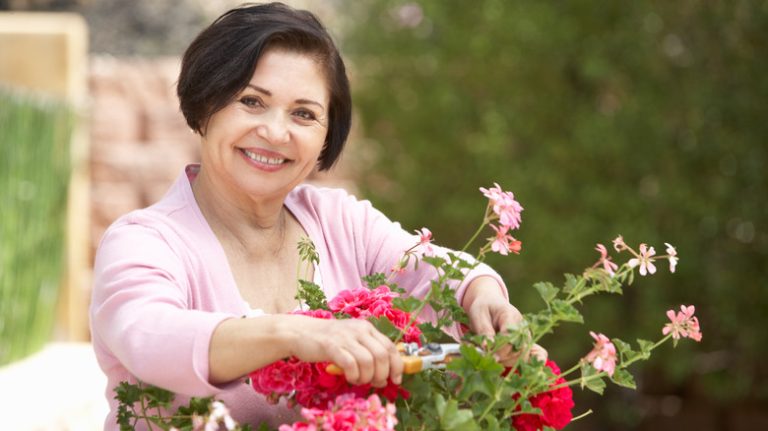Coreopsis perennial, also known as tickseed, is a group of plants that thrives in bright areas and is tolerant of drought. These perennials are very popular for planting in gardens and landscapes due to their bright yellow flowers and attractive foliage. Coreopsis comes in many different species and varieties, with some growing as low as a foot tall and others reaching heights of up to three feet. They are hardy plants that can withstand frost and are well-adapted to a wide range of soil types.
One of the most well-known species of Coreopsis perennial is Coreopsis grandiflora, also known as lanceleaf tickseed. This variety of Coreopsis has bright golden-yellow flowers that bloom from early summer to early fall, and its leaves provide interest in the garden even when the flowers are not in bloom. Another popular variety is Coreopsis verticillata, also known as threadleaf tickseed. This variety has thin, thread-like leaves and small nectar-rich flowers that attract butterflies and bees.
When planting Coreopsis perennials, it is important to choose a location that receives full sun or light shade and has well-drained soil. These plants are very drought-tolerant and do not require a lot of water, making them a great choice for gardens in dry climates or areas with poor soil. Coreopsis can be planted as seeds or as young plants, and they will quickly spread and fill in an area with their bright blooms. For multi-season interest, consider planting different varieties of Coreopsis that bloom at different times throughout the year.
To care for Coreopsis perennials, it is important to deadhead the flowers as they fade to encourage more blooms. You can also cut back the plants in late summer to promote a second bloom in the fall. Coreopsis is a low-maintenance plant and does not require much fertilizer or pruning. However, it is important to divide the plants every few years to prevent overcrowding and maintain their health.
In conclusion, Coreopsis perennial is a beautiful and easy-to-grow plant that adds a bright and cheerful touch to any garden or landscape. With its tolerance to drought and various species and varieties available, there is a Coreopsis plant for every gardener’s taste and garden style. Whether you choose the grandiflora or verticillata species, you will be rewarded with stunning flowers and attractive foliage throughout the growing season.
Coreopsis Seeds
Coreopsis seeds are the perfect way to grow your own beautiful perennial flowers. Coreopsis, also known as tickseed, is a popular flowering plant that is grown for its bright and vibrant flowers. There are many species of coreopsis, but the most commonly grown variety is Coreopsis tinctoria, commonly known as plains coreopsis or golden tickseed.
When planting Coreopsis seeds, there are a few tips to keep in mind. Coreopsis is generally a very hardy plant that can tolerate a variety of soils, but it thrives in well-drained soils. It can be grown as an annual or a perennial, depending on your preference. If you’re planning to grow coreopsis as a perennial, be sure to choose a species or cultivar that is known to be more winter-hardy.
Coreopsis seeds can be planted directly in the garden or started indoors. If starting indoors, plant the seeds about 6-8 weeks before the last frost date. The seeds should be sown on the surface of the soil and lightly covered with a thin layer of soil. Keep the soil moist but not waterlogged, and the seeds should germinate in about 7-10 days.
Once the coreopsis seeds have germinated, the plants will grow quickly. They have lanceleaf foliage and produce flowers in groups on tall, wiry stems. The flowers can come in a variety of colors, including shades of yellow, pink, and red. One of the most popular species is Coreopsis grandiflora, commonly known as large-flowered coreopsis or rosea tickseed.
Coreopsis is a multi-season plant that produces colorful flowers throughout the summer and into the fall. The flowers are loved by butterflies and bees and provide a good source of nectar. Coreopsis plants have a bushy habit and can grow to be about 1-2 feet tall, depending on the species. They have whorled leaves and are known for their excellent tolerance to heat and humidity.
Coreopsis seed is available in many varieties, including the popular ‘Sunrise’ and ‘Ruby’ cultivars. These cultivars have semi-double flowers and are known for their golden-yellow and pink colors, respectively. Coreopsis tripteris, commonly known as tall tickseed or whorled leaf coreopsis, is another favorite among gardeners.
So whether you’re a seasoned gardener or just starting out, consider planting coreopsis seeds in your garden. With its vibrant flowers, attractive foliage, and easy-care nature, coreopsis is sure to be a standout in your garden.
How to Plant and Grow Coreopsis
Coreopsis, also known as tickseed, is a popular perennial plant with a whorled leaf habit. These plants are generally easy to grow and can be propagated from seeds or by dividing established plants.
To start growing Coreopsis from seeds, the following steps can be followed:
| 1. | Choose a sunny location in your garden for planting Coreopsis |
| 2. | Prepare the soil by removing any weeds and loosening it with a garden fork |
| 3. | Sow the seeds directly into the soil, covering them with a thin layer of soil |
| 4. | Water the seeds regularly, keeping the soil moist but not waterlogged |
| 5. | Germination should take place within 2-3 weeks |
Alternatively, Coreopsis can also be planted by dividing established plants. This can be done in early spring or fall:
| 1. | Dig up the plant carefully, trying not to damage the roots |
| 2. | Divide the plant into smaller clumps, ensuring that each clump has some foliage and roots |
| 3. | Replant the divided clumps in a well-drained soil |
| 4. | Water the newly planted divisions thoroughly |
Coreopsis plants generally have a bushy habit and can grow up to 60cm in height. They produce beautiful bright yellow flowers that attract nectar-seeking insects. The golden blooms make an excellent addition to any garden, and they can thrive in a wide range of planting zones.
Coreopsis is known for its tolerance to drought and can withstand dry conditions. However, regular watering is still necessary, especially during extended periods of dry weather.
There are many species and varieties of Coreopsis available, each with its own unique features. Some popular species include Coreopsis rosea, Coreopsis verticillata, and Coreopsis ruby.
When planting Coreopsis, keep the following tips in mind:
- Plant in a sunny location for best results
- Choose a well-drained soil
- Water regularly, especially during dry periods
- Deadhead the flowers to encourage more flowering
- Apply a layer of mulch around the plants to help retain moisture
- Divide the plants every few years to maintain their vigor
- Coreopsis can attract butterflies and bees to your garden, adding interest and color
With its multi-season flowering, Coreopsis is a favorite among many gardeners. The large-flowered species, in particular, can create a stunning display in the garden. Whether you choose a Coreopsis with golden yellow, pink, or various other colored flowers, you can expect a beautiful and long-lasting display.
In conclusion, Coreopsis is a versatile perennial plant that is relatively easy to grow. With its attractive foliage and vibrant flowers, it can add a touch of color to your garden. Whether you choose to start from seeds or divide established plants, Coreopsis is sure to be a valuable addition to your garden.
Coreopsis
Coreopsis is an excellent perennial plant species that belongs to the whorled leaf group. It is known for its bright and golden-yellow flowers that bloom in the summer. With many cultivars available, you can expect a wide variety of colors and heights when growing Coreopsis in your garden.
One of the most popular Coreopsis species is Coreopsis lanceolata, also known as lanceleaf tickseed. This variety is generally tolerant of drought and frost, making it a favorite among gardeners. Another popular species is Coreopsis grandiflora, commonly known as large-flowered tickseed, which thrives in well-drained soil and bright sunlight.
If you’re interested in adding Coreopsis to your garden, here are a few tips to keep in mind:
- Plant Coreopsis seeds or seedlings in a sunny area.
- Choose a well-drained soil for optimal growth.
- Water regularly, especially during dry periods.
- Coreopsis generally spreads quickly, so leave enough space between plants.
- Some Coreopsis varieties, such as Coreopsis verticillata (threadleaf tickseed), can tolerate partial shade.
- Deadhead spent flowers to encourage more blooms.
- Divide Coreopsis plants every few years to maintain their vigor.
- Coreopsis attracts bees and butterflies, making it a great addition to pollinator gardens.
Whether you’re planning a colorful border or looking for a low-maintenance plant, Coreopsis is a fantastic choice. Its bright and cheerful flowers will add a burst of color to any garden, and its tolerance to various growing conditions makes it an easy-to-care-for perennial. So why not give Coreopsis a try and enjoy the beauty it brings to your outdoor space?
About Coreopsis Tickseed
Coreopsis Tickseed is a plant that belongs to the Coreopsis genus. It is known for its bright and vibrant flowers, which come in shades of golden-yellow, ruby, and pink. This perennial plant is popular among both novice and experienced gardeners because of its low maintenance and attractive appearance.
Coreopsis Tickseed grows well in various soil types, but it thrives in well-drained soils. It can withstand drought conditions and is tolerant of both heat and humidity. This makes it an excellent choice for gardens in different climate zones.
There are many varieties of Coreopsis Tickseed to choose from, each with its own unique characteristics. Some of the popular varieties include Coreopsis rosea, Coreopsis lanceolata, and Coreopsis grandiflora. These plants have different leaf shapes, flower colors, and growth habits, providing a wide range of options for gardeners.
When planning to grow Coreopsis Tickseed, it is important to keep in mind its growing habits. Most species of Coreopsis Tickseed grow to heights of around 60cm, although there are some taller varieties as well. The plants have a bushy habit and produce flower heads in clusters.
Coreopsis Tickseed is a multi-season plant that provides interest throughout the year. Its bright flowers and foliage add color to the garden during the flowering season, while the leaves continue to provide visual appeal after the flowers fade. The plant also produces seeds, ensuring the spread of Coreopsis Tickseed for future growth.
Overall, Coreopsis Tickseed is a favourite among gardeners for its easy-care nature, bright flowers, and ability to withstand different growing conditions. Whether you are a beginner or an experienced gardener, adding Coreopsis Tickseed to your garden can be a great choice.
| Scientific name | Coreopsis |
| Family | Asteraceae |
| Height | Around 60cm (varies by variety) |
| Soil | Well-drained soils |
| Sunlight | Full sun to partial shade |
| Hardiness zone | Depends on the variety |




